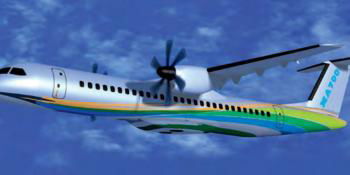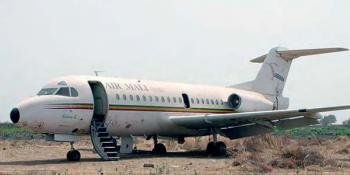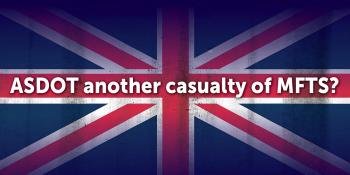Lon Nordeen provides an overview of the Block III F/A-18 Super Hornet, a fighter destined to take its part in the future of US naval aviation
MILITARY BLOCK III SUPER HORNET
America’s naval aviation has long struggled with a shortfall of strike fighters, particularly for its carriers. The US Navy’s solution is to sustain a declining number of classic Hornets, deploy US Marine Corps F/A-18 Hornet squadrons in some carrier air wings, and buy more Super Hornets and F-35Cs to replace the classic Hornets. However, F/A-18 Hornets have been worn out by continuous deployments and an inventory that fell short as depot repair programmes failed to produce planned results. Classic F/A-18 Hornet squadrons are all but gone, having transitioned or being in the process of transitioning to the Super Hornet; one unit is currently working up on the F-35C Lightning. However, the F-35C will not deploy on a carrier until 2021 and the type’s ramp-up will be gradual.
During a House Armed Services Committee hearing on February 9, 2017, the US Navy’s Director of Air Warfare, Rear Admiral DeWolfe Miller, commented: “The Navy views the F/A-18 Super Hornet and its fourth-gen capacity and the capabilities that come with the exquisite F-35C as complementary. In our view and per our 30-year aviation plan, we end up with a carrier air wing mix. We grow to a mix that provides two squadrons of F-35Cs and two squadrons of Super Hornets. We feel that that mix, that complementary capacity of the Super Hornet and the capability of the F-35C, is going to handle us well in the near term, and as we continue to grow that capability into the far term. Now, both of these aircraft, just like every weapon system have to have a modernisation programme … F/A-18s are not unique in that regard, they also have a modernisation effort … We have a shortfall in the Navy on our carrier flight decks in our strike fighter force. Under what’s called strike fighter inventory management … we have to address our near-term issues, as well as make sure our warfighting needs are met … We are working a balance. We need to address [the issues with] the bulk of our fleet right now. We have four F/A-18 squadrons in every one of our nine carrier air wings. We have to get after aircraft availability. So what do we need to do? We have to properly fund and start recovering the readiness of our existing F/A-18 fleet today. Procurement is another lever to pull, so I would contend that we need, and our budget has asked for, additional F/A-18s to start applying towards that readiness. As we ramp up, we are in a different position to the Air Force and the Marine Corps with respect to F-35. Our first squadron doesn’t start training until next year, and we don’t deploy until 2021. Right now, our near-term focus is the F/A-18 readiness issue.”
Department of Defense plans called for the end of domestic funding for the Super Hornet production line after FY2017. However, the plan changed because brand-new F-35Cs are entering service later and the Navy’s Super Hornet fleet has already flown more than 45% of its 6,000-hour service life. According to Rear Admiral Miller, the Navy has committed to focus on F/A-18 readiness issues to keep the naval aviation force viable. This includes, sustaining the F/A-18 Hornet fleet for the US Marine Corps and Navy Reserves, buying more F/A-18 Super Hornets to equip Navy strike fighter squadrons, and funding of the Service Life Modification (SLM) programme designed to further extend the lives of most Super Hornets in the fleet and upgrade their capability.

When considering a new way of operations that’s more effective, the US Navy is committed to having its major platforms on the network. The Block III upgrade is the way for Super Hornets to participate in the new way of operations and become more effective.
The US Navy’s 2016 vision statement spells it out: “Naval Integrated Fire Control-Counter Air [NIFC-CA] increases the lethal range of the carrier strike group by networking otherwise individual platforms, weapons and sensors to work as one. This systemof- systems environment consists of three kill chains: from the air, from the sea and from the land. By 2025, from the air will, at a minimum, consist of the F-35B and F-35C Lightning II, the F/A-18E and F/A-18F Super Hornet, the E-2D Advanced Hawkeye, the EA-18G Growler, the multifunctional information distribution system and the AIM-120 AMRAAM missile. NIFC-CA’s efforts bring the following benefits: long-range fire control and projection; the ability to operate in and control contested battlespace; and high situational awareness.”
The Navy’s five-year defence plan FY2018–2022 included more than $7 billion earmarked for 80 additional Super Hornets. The President’s budget in FY2018 included 14 Super Hornets and Congress added 10, 23 in FY2019, but increased to 24, 14 in FY2020, 14 in FY2021 and 15 in FY2022. The FY2018 request also included $265 million for development of Super Hornet Block III systems and funding for the SLM programme.
Designed as an evolutionary upgrade of the F/A-18 Hornet, the Super Hornet first flew in 1995. The Navy planned to buy 480 and later 565 Super Hornets to perform fighter, strike and aerial refuelling roles. The aircraft replaced the F-14 Tomcat, classic F/A-18 Hornet and S-3 Viking as a tanker for operations on aircraft carriers.
Compared to the classic F/A-18 Hornet, the Super Hornet is a larger aircraft with more powerful engines, larger internal and external fuel capacity, two more weapons stations, numerous avionics improvements, and features designed to reduce the radar cross-section.
From the start of its design process, the Super Hornet was developed to incorporate new systems, sensors and weapons continuously, following a planned update programme dubbed its roadmap. The first 178 F/A-18E and F/A-18F aircraft built in production Lots 21 to 25 are known as Block Super Hornets, equipped with the Raytheon APG-73 mechanically scanned array radar and a configuration of systems similar to the final versions of the classic F/A-18C and F/A-18D Hornet.
In 2006, the first advanced Block II Super Hornets began to enter service equipped with the Raytheon APG-79 active electronically scanned array radar, ALQ-214 Integrated Defensive Electronic Countermeasures suite, Joint Helmet-Mounted Cueing System, Raytheon ASQ-228 ATFLIR multispectral targeting pod, Link 16 connectivity, upgraded systems and new weapons. Block II was a major upgrade of the Super Hornet.
The Super Hornet roadmap updates the aircraft’s high-order language or H-series System Configuration Software, and adds new weapons, systems and capabilities every two years. For example, the soonto- be-installed H14 software load adds the pod-mounted ASG-34 long-range infrared search and track sensor, new capabilities and weapons to keep the Super Hornet combat ready.
US Navy Super Hornets have flown in combat over Afghanistan, Iraq and other combat theatres with glowing reports, including the 2017 shoot-down of a Syrian Air Force Su-22 over Syria.
To date, Boeing has been awarded two export contracts for the Super Hornet; the Royal Australian Air Force operates 24 Block II aircraft and has flown in anti-ISIS operations, and Kuwait recently signed an order for up to 40 aircraft.
Strike fighter options
Captain David Kindley, Naval Air Systems Command’s PMA-265 F/A-18 and EA-18G Program Manager, told AIR international: “The Navy has a number in mind of how many strike fighters it needs in order to meet mission tasking. The Navy can adjust four levers to meet its strike fighter goal. One, buy the F-35C, the Navy is starting to procure more Lightning IIs. Two, extend the service life of its existing Super Hornets. We are using our Super Hornets at a high rate, so we need to extend the life of the aircraft in the fleet even if we are successful in pulling all of the other levers. Three, buy more Super Hornets. This makes sense in the short term, as we get a lot of capability for a reduced cost. Super Hornet is a proven platform and provides very good capability to the fleet. The problem [with this option] is that by the 2030+ timeframe they will be at the end of their service lives. That is why we need the Super Hornet Block III upgrade, the F-35C and to start a follow-on capability. Four, use our Super Hornets less. The Navy is doing live virtual training and undertaking other efforts to reduce the utilisation rate on the jets.
“Right now, the Navy is pulling on all four levers at the same time and adjusting the dials in an attempt to reach its goal. We have looked at many plans: the impact of new procurement, upgrades and what the Super Hornet configuration should be in order to complement the F-35 and achieve interoperability to meet the projected threats over the next two decades.”
Block III
Captain Kindley continued: “You should consider the Block III upgrade as five engineering change programmes: displays [part of an advanced cockpit system], conformal fuel tanks, networking capability, signature enhancements and a 9,000-hour service life.
“We go from the 5-inch displays to 18- inch touchscreens. This has several benefits. One area not often focused on is weight reduction. When the avionic guys take out the old 5-inch displays they are nearly 3ft long [behind the console] and heavy. The new displays reduce weight by about 70lb. Also, the glass in the old displays is obsolete and we are having a challenge getting replacements. We need the real estate and versatility based on the mission set. So, we have the weight, obsolescence, logistics of the old 5-inch displays, and we need the new technology displays to pass more information. What we are trying to achieve with the Block III is improve network connectivity with the EA-18 Growler, E-2D Advanced Hawkeye, F-35 Lightning II and ships. The future is data. We can send the data, but can the pilot and aircrew understand what they are looking at?
“The conversation about the need for conformal fuel tanks [CFTs] began when we started talking about adding the ALQ- 249 Next Generation Jammer [NGJ] to the EA-18G. The NGJ is big and draggy, so we started looking at ways to remove the big underwing external fuel tanks. This is where CFTs started. We asked our team to evaluate a CFT-configured Super Hornet and what it would look like alongside the F-35. We got exciting results from our analysis. The Chief of Naval Operations’ told us the CFTs are a bigger game-changer than the new displays, which surprised us. Their analysis showed that with CFTs and no external fuel tanks or just one on the centreline, we still have a capable performing strike fighter, and it opens up new options for what you can carry and how far you can go.
“Distributed Targeting Process-Networked [DTP-N, an advanced computer] is a programme of record on EA-18G Growler. This engineering change proposal does two things. First, it includes a new waveform called Tactical Targeting Networking Technology [TTNT, an advanced network], which is a follow-on to Link 16. To oversimplify, if Link 16 is dial-up internet, then TTNT is broadband. It brings a ton of capability IP-based; it is really exciting. This enables new capabilities that we will need in the future with the Growler and Super Hornet. Second, DTP-N brings another processor. This will allow very rapid, innovative, almost application hosting to the platform. I am very excited about what DTP-N is, and the fact that it is fairly low risk, as the taxpayers have already bought it for the Growler.
“Right now, the Navy is pulling on all four levers at the same time and adjusting the dials in an attempt to reach its goal.” Captain David Kindley, Naval Air System Command’s F/A-18 Program Manager


“This is the culmination of many conversations within the Navy, which has finally turned the corner on its definition of what a weapons system is. Once it was the single fighter going out and taking action. Today, the weapons system is the strike group. When the Navy now discusses fourth and fifth-generation strike fighters working together, supported by EA-18G Growlers and an E-2D Advanced Hawkeye, there is a lot more push for interoperability, more than I have ever seen. Block III is a logical outgrowth of that trend. We will continue to have an ever greater datarich battle space, and it is incumbent on all players, such as our fourth-generation Super Hornet, to take advantage of this new paradigm. Super Hornet Block III is the mandate for digital networking.”
Captain Kindley added that signature enhancements are included. He said: “We will go back and repaint the Super Hornet, add treatments and do other things to reduce our signature and make the aircraft better. New Block III Super Hornets will have a 9,000-plus service life airframe. The SLM programme will add Block III upgrades and extend the life of Block II Super Hornets from 6,000 to 9,000 flight hours.”
Existing jets, new jets
AIR International asked Captain Kindley about the earlier Block I Super Hornets. He replied: “Since the Block I forward fuselage is different to a Block II, it does not seem feasible to retrofit the Block II radar and Block III systems into a Block I aircraft. That said, Block I aircraft still have value and we plan to use them in our air wings for many years. They will be flown for training, test, adversaries, as Blue Angel aircraft, and for other uses.
“With what we know about F-35 procurement, and new Super Hornets, we only plan to put Block II Super Hornets through the Service Life Modification programme. The Navy’s message to me is to make sure we continue to have many options to maintain our strike fighter force.”
Boeing and its industry team have long funded research and flight testing of advanced Super Hornet systems. Dan Gillian, Boeing Vice President, F/A-18 and EA-18G programmes, told AIR International: “The Block III story is different from that of the Advanced Super Hornet demonstration, which focused on stealth. The US Navy looked at the carrier air wing and its capability gaps; the Super Hornet Block III is the result of that analysis. Future fighters have to be networked and survivable. Block III is how we make the Super Hornet a networked and survivable strike fighter, one that works in a complementary way with the F-35, the EA-18G Growler and E-2D Advanced Hawkeye well into the 2040s.”
Single-seat F/A-18E and two-seat F/A-18F Super Hornets equip more than 30 US Navy strike fighter squadrons, representing nearly all of the tactical fighter force assigned to the nine current carrier air wings. The Navy’s long-term plan is for Block II, Block III and Growler, and perhaps even more updated versions of the Super Hornet, to make up the majority of the carrier air wing force structure well beyond 2035.






